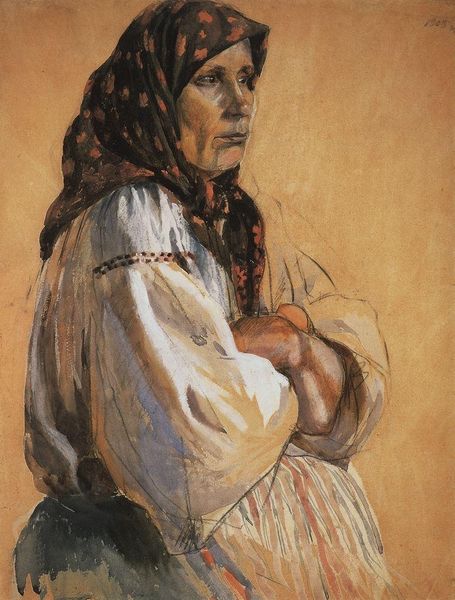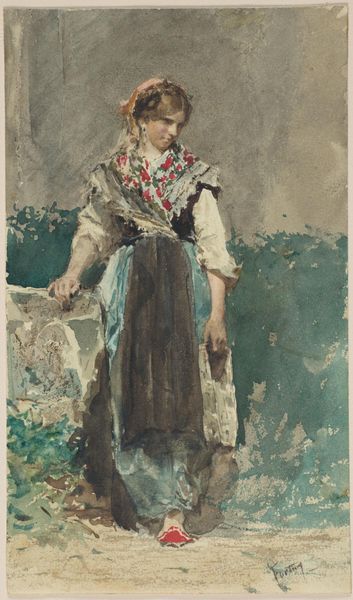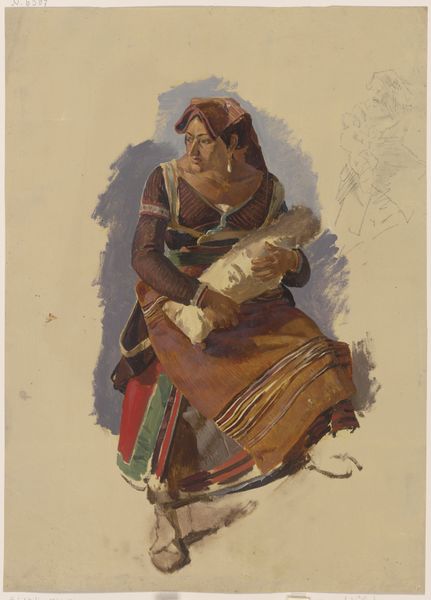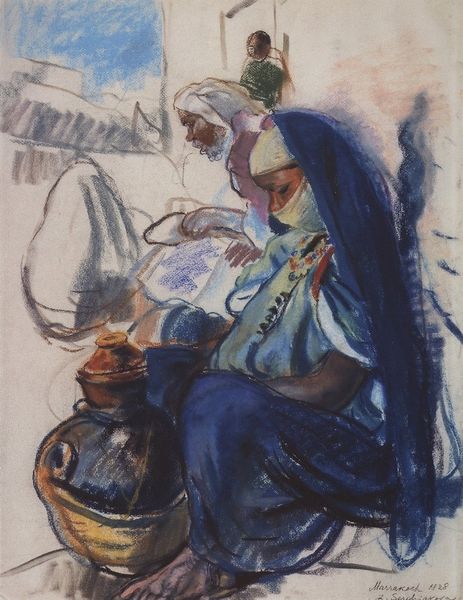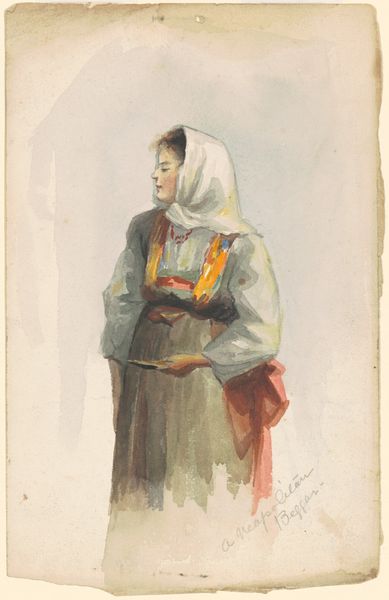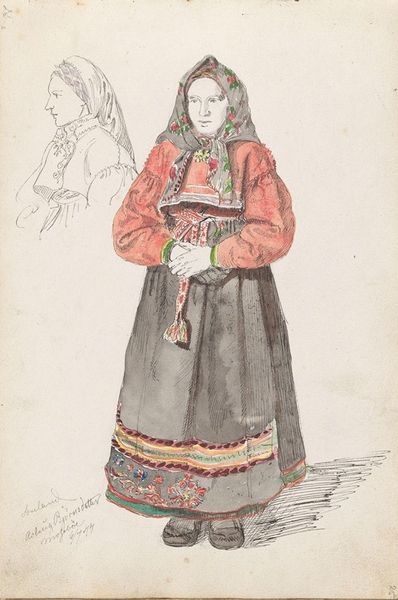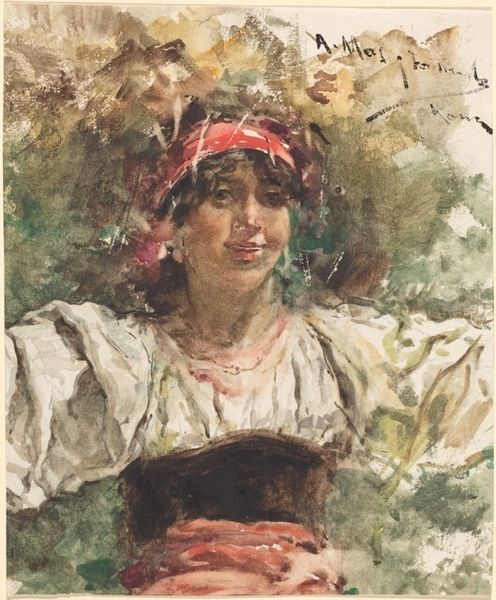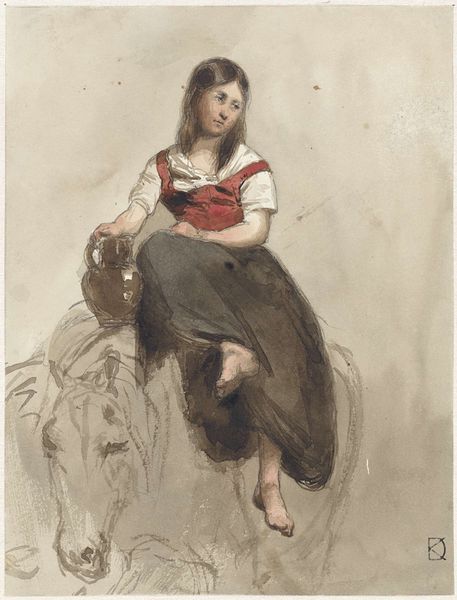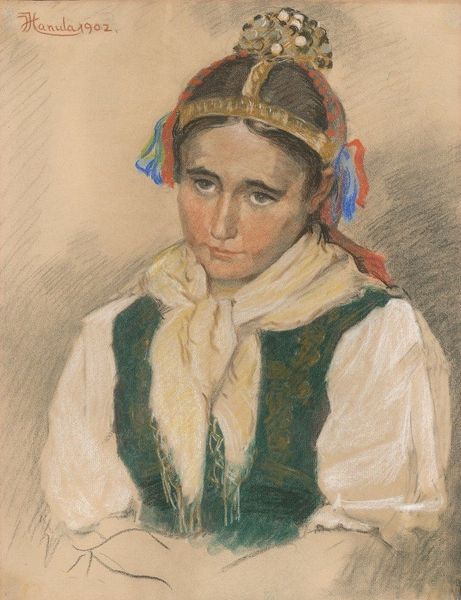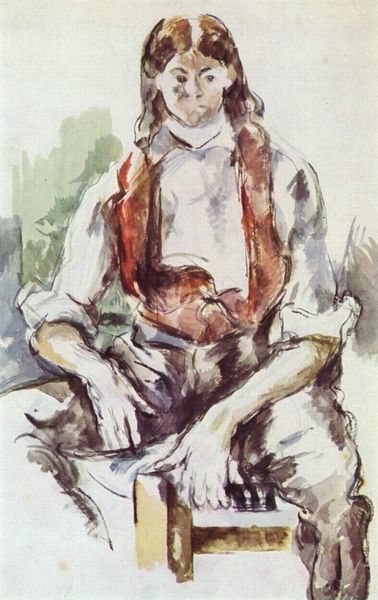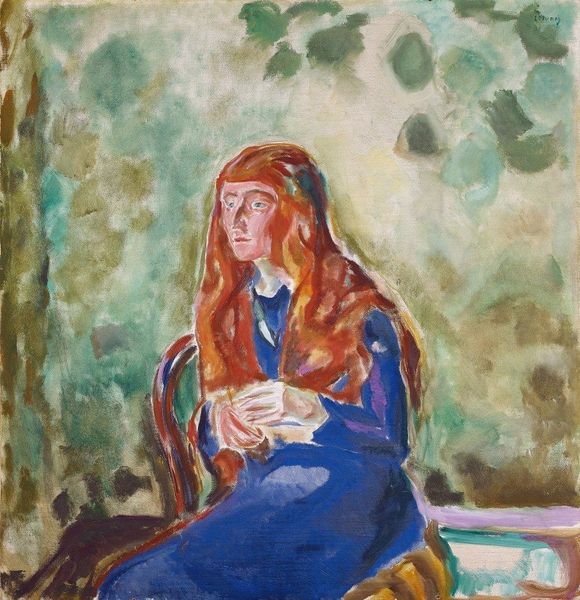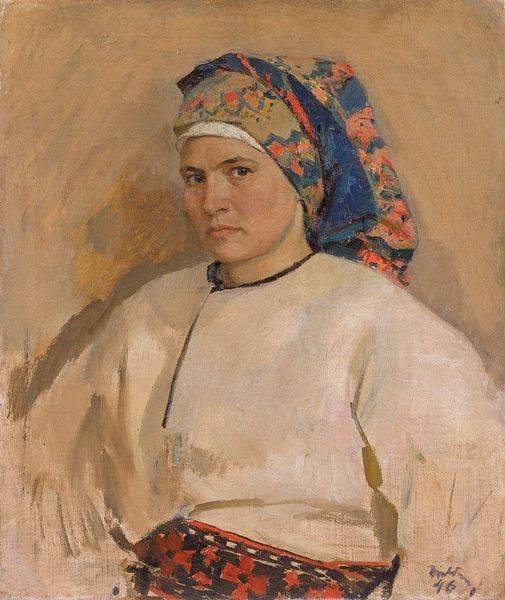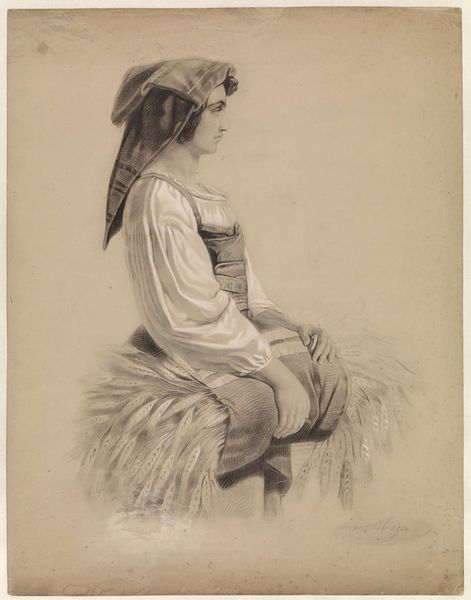
painting, watercolor
#
portrait
#
painting
#
figuration
#
oil painting
#
watercolor
#
genre-painting
#
modernism
#
watercolor
Copyright: Iosif Iser,Fair Use
Curator: I’m immediately struck by the colors. There's such an earthy palette softened by these watercolor techniques. It gives the whole piece a feeling of quiet reflection. Editor: I think it captures a sense of rootedness. The artist, Iosif Iser, painted this in 1935 and it’s titled "Woman from Muscel". He was a Romanian artist who moved through different styles but retained a deep engagement with social themes. Curator: What is it about that engagement, though? The way she is positioned –reclining casually, yet somehow formally presented– seems to be commenting on something. What do you make of it? Editor: I think it is essential to recognize that folk dress and traditional arts were powerful visual statements of cultural identity. A portrait like this challenges viewers to contemplate the place of rural women within the modernising Romanian society of the interwar period. Her garb tells a story of heritage. Curator: Do you think the loose, almost unfinished style downplays that intention at all? Because if this were painted with exacting detail, one could easily frame her as a symbol of tradition versus modernity. Here, the approach seems much more humanizing and sympathetic. Editor: Possibly. But I would argue the seeming informality might also subtly resist academic portrayals favoured at the time. Think about it, through a feminist lens; by presenting a more relaxed pose, Iser evades reducing this woman to simply an idealized figure or an ethnographic curiosity. It centers her presence without fetishizing her otherness. Curator: It is difficult, too, I think, not to read the historical context of 1935 into this. While Iser could be focused on questions of representation and cultural identity, this also would have been painted during the rise of oppressive ideologies throughout Europe. Does that influence the social weight of the painting, do you think? Editor: Absolutely, especially concerning women’s roles during that historical time frame. We cannot disassociate the social landscape that saw simultaneous pushes toward progress and returns to repressive traditional roles and narrow cultural-political agendas. The details matter, and I appreciate your highlighting of them. It reveals not just a portrait but a document. Curator: A document that prompts endless questions about what it truly means to look, and whose stories art preserves. Thank you. Editor: Indeed, a compelling reason to spend time with Iser’s work today.
Comments
No comments
Be the first to comment and join the conversation on the ultimate creative platform.
